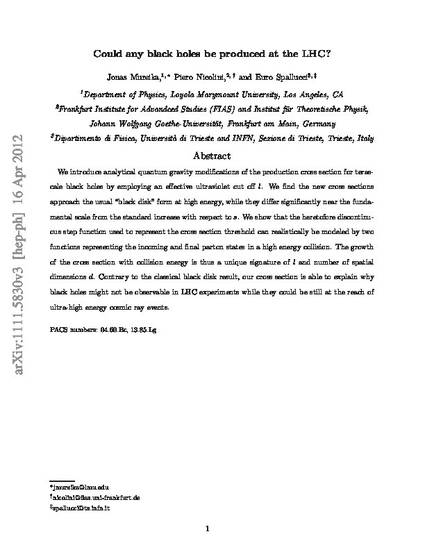
We introduce analytical quantum gravity modifications of the production cross section for terascale black holes by employing an effective ultraviolet cut off l. We find the new cross sections approach the usual "black disk" form at high energy, while they differ significantly near the fundamental scale from the standard increase with respect to s. We show that the heretofore discontinuous step function used to represent the cross section threshold can realistically be modeled by two functions representing the incoming and final parton states in a high energy collision. The growth of the cross section with collision energy is thus a unique signature of l and number of spatial dimensions d. Contrary to the classical black disk result, our cross section is able to explain why black holes might not be observable in LHC experiments while they could be still at the reach of ultra-high energy cosmic ray events.
This is an author-manuscript of an article accepted for publication in Physical Review D. The version of record: Mureika, J.R., P. Nicolini, and E. Spallucci. Could any black holes be produced at the LHC? Phys. Rev. D. (2012) 85: 106007. is available online at DOI: 10.1103/PhysRevD.85.106007.
